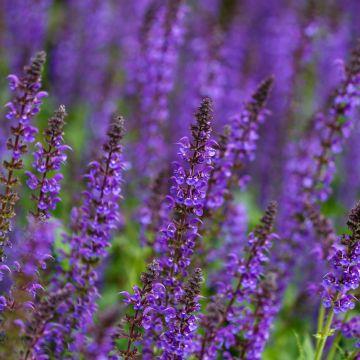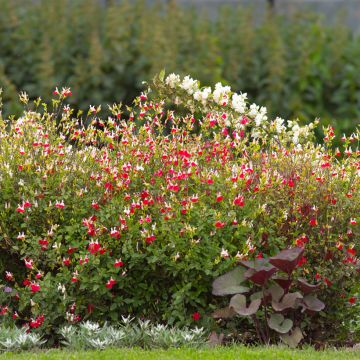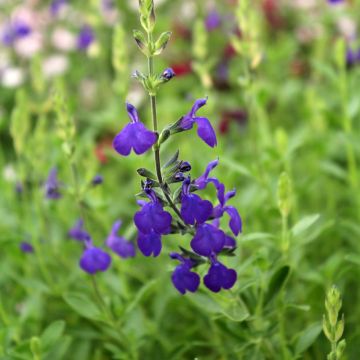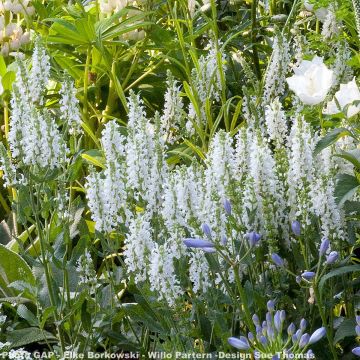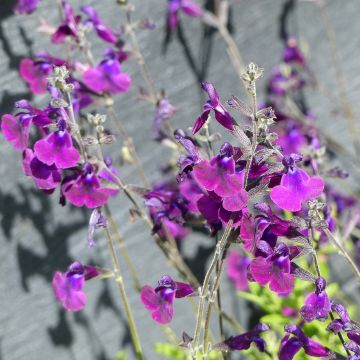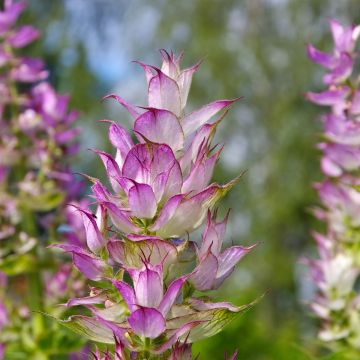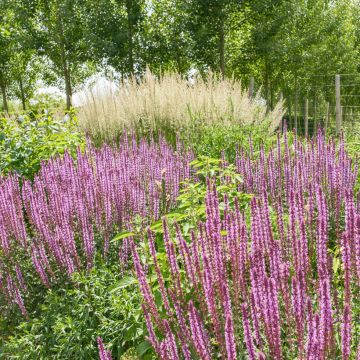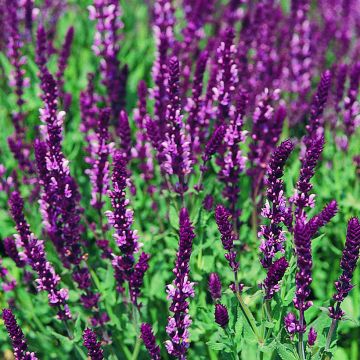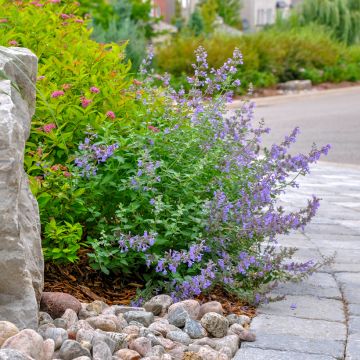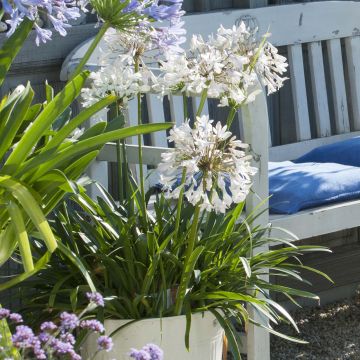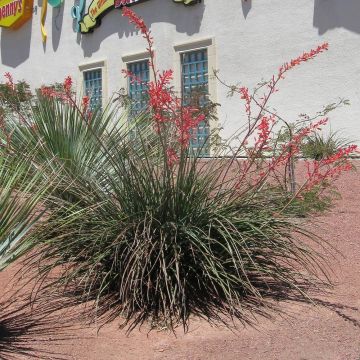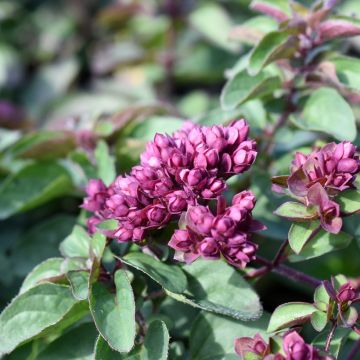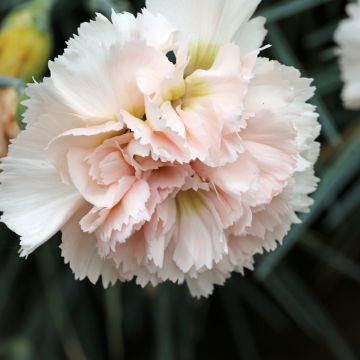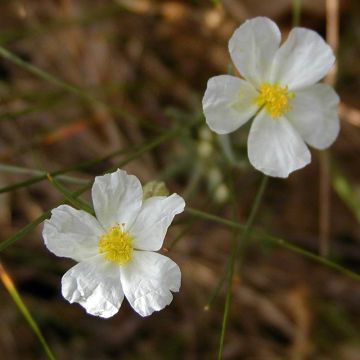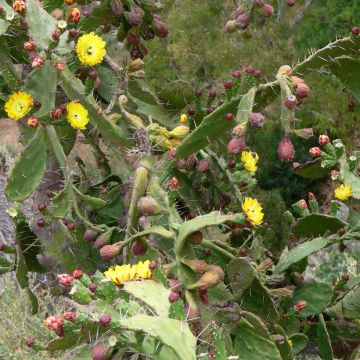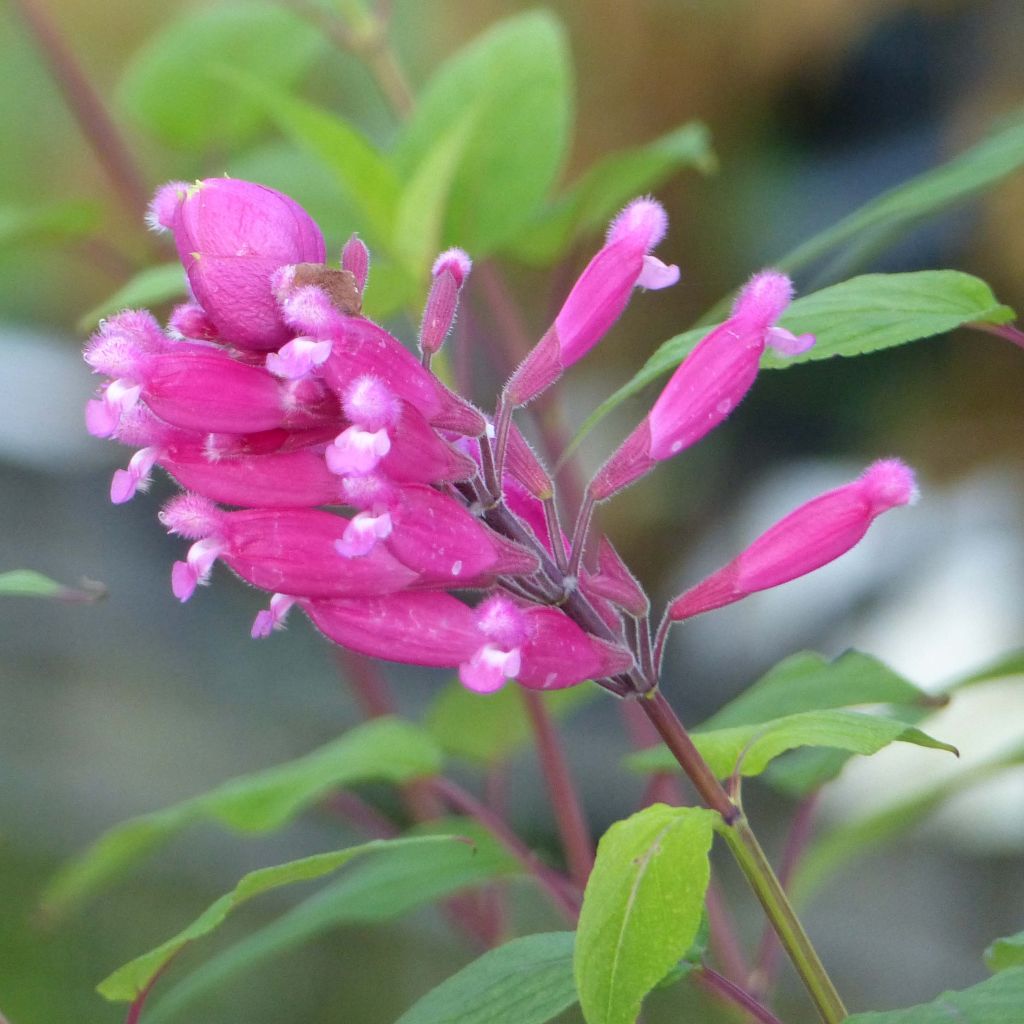

Salvia involucrata Bethelii
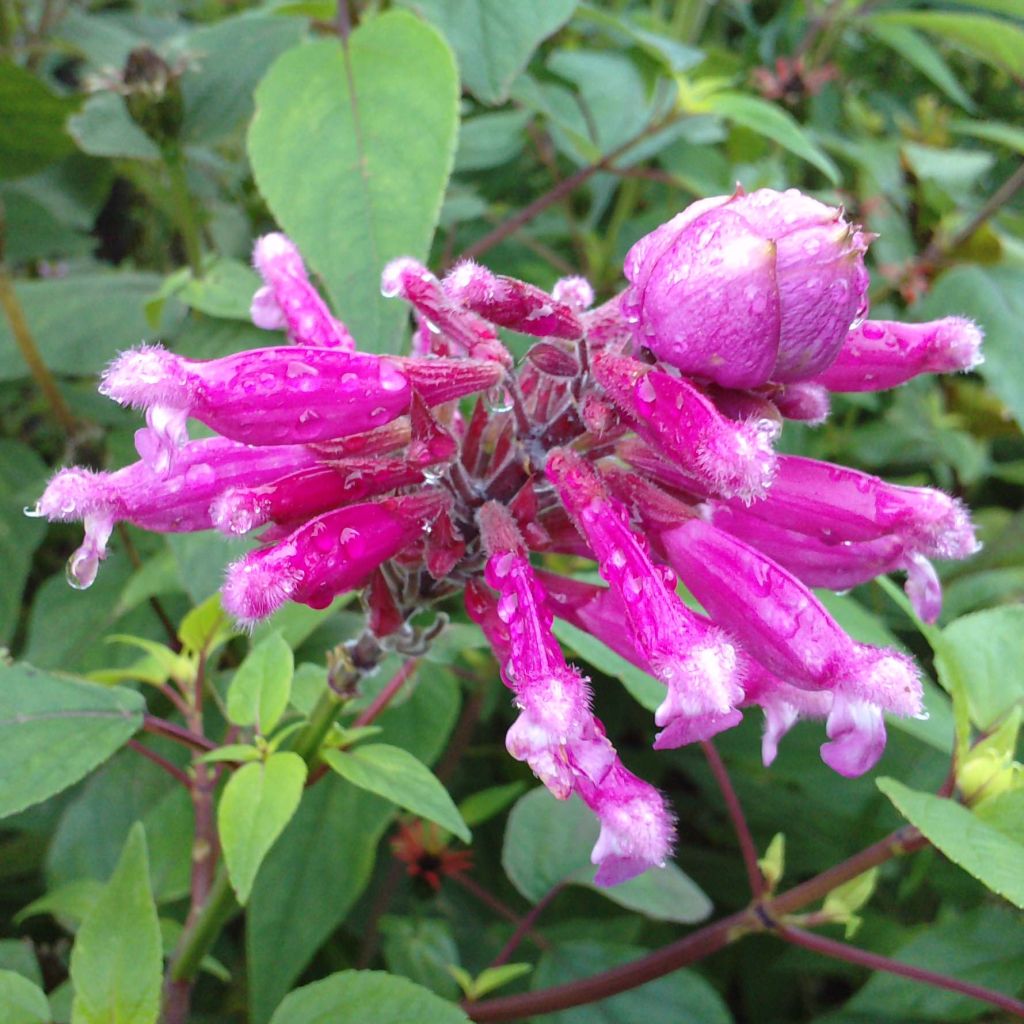

Salvia involucrata Bethelii


Salvia involucrata Bethelii
Salvia involucrata Bethelii
Salvia involucrata Bethelii
Rosy-leaf Sage
Package received very quickly, the day after ordering. However, the plant was cut at ground level, a pity. The box was way too big and not suitable for the content. I'm trying to save it.
Frédéric, 05/10/2024
Special offer!
Receive a €20 voucher for any order over €90 (excluding delivery costs, credit notes, and plastic-free options)!
1- Add your favorite plants to your cart.
2- Once you have reached €90, confirm your order (you can even choose the delivery date!).
3- As soon as your order is shipped, you will receive an email containing your voucher code, valid for 3 months (90 days).
Your voucher is unique and can only be used once, for any order with a minimum value of €20, excluding delivery costs.
Can be combined with other current offers, non-divisible and non-refundable.
Home or relay delivery (depending on size and destination)
Schedule delivery date,
and select date in basket
This plant carries a 6 months recovery warranty
More information
We guarantee the quality of our plants for a full growing cycle, and will replace at our expense any plant that fails to recover under normal climatic and planting conditions.

Would this plant suit my garden?
Set up your Plantfit profile →
Description
The Salvia involucrata 'Bethelii' is an impressive bushy perennial full of charm. It forms a mass of leafy stems with a slightly loose habit, flowering from summer until the first frost, with beautiful bright green foliage that lasts into winter in mild climates. Its upright blooms bear lovely spherical, pink and green flower buds, which open to reveal crimson-pink flowers. Its large downy leaves release a grapefruit scent upon the slightest touch. This aromatic plant is not very hardy in humid and cold winter climates. It thrives in well-drained, ordinary garden soil, even clayey and moist, in a sunny or semi-shaded position. Plant it in a large pot that can be overwintered under cover to grow it in a wider range of climates.
The Salvia involucrata 'Bethelii' belongs to the family Lamiaceae or Labiatae. This natural cultivar of Salvia involucrata is native to the high plateaus of Mexico, where it is found in shady sites, on the edge of woodlands or in sparse forests. Its origin explains its tenderness. With its spectacular growth, the plant is capable of forming a small bush in a single season, forming a beautiful branching clump consisting of long flexible stems, 1 m (3.3 ft) to 1.5 m (4.9 ft) high and wide, consisting of long flexible stems, woody at the base. The long-stalked very aromatic leaves, are larger and more velvety than the usual. They are opposite, ovate, bright green, sometimes veined with purplish pink. From the month of July until October-November, the branches develop floral spikes at their tips. Each bud is composed of large coloured bracts gathered in a collar. The bracts open and fall one after the other, revealing bright rose tubular, bilabiate flowers ranging from bright pink to carmine, measuring from 3 to 5 cm (1.2 to 2 in) in length. The petals have a central swelling and a very hairy upper lip. The nectar- and pollen-rich flowers can also occur in spring, when the plant is not affected by the cold. Hardy above -5°C (23°F) in a protected location and in dry soil during winter.
In the wild, Salvia involucrata 'Bethelii' grows in rather moist, fertile but well-drained soils, in a subtropical, mountain climate. It is also a valuable plant for pollinating insects, as it provides a good source of nectar and pollen when most other flowers have long since finished in the garden. This generous and charming perennial is perfect for English-style gardens, at the back of borders, combined with hollyhocks, shrubby mallows, or the grey and fragrant foliage of large wormwoods. Placed in front of a small winged spindle tree (Euonymus alatus compactus), a smoke tree (Cotinus), or a plum-leafed spirea, its bright pink flowers will blend with their magnificent autumn colours. In regions where the winter is mild, it can form beautiful flowering hedges together with rosemary, Caryopteris, and Teucrium fruticans. The stems are square in cross-section and bear white flowers surrounded at the base by a velvety, purple-blue, amethyst-purple or purplish-lavender calyx. The inconspicuous flowers are composed of two lips, white to pinkish in colour. The evergreen foliage is made up of thick, long, thin leaves with toothed edges. The plant's tissues contain an essential oil with interesting properties that has recently been studied. It is hardy above -5°C (23°F) in protected locations and in dry soil in winter.
Report an error about the product description
Salvia involucrata Bethelii in pictures
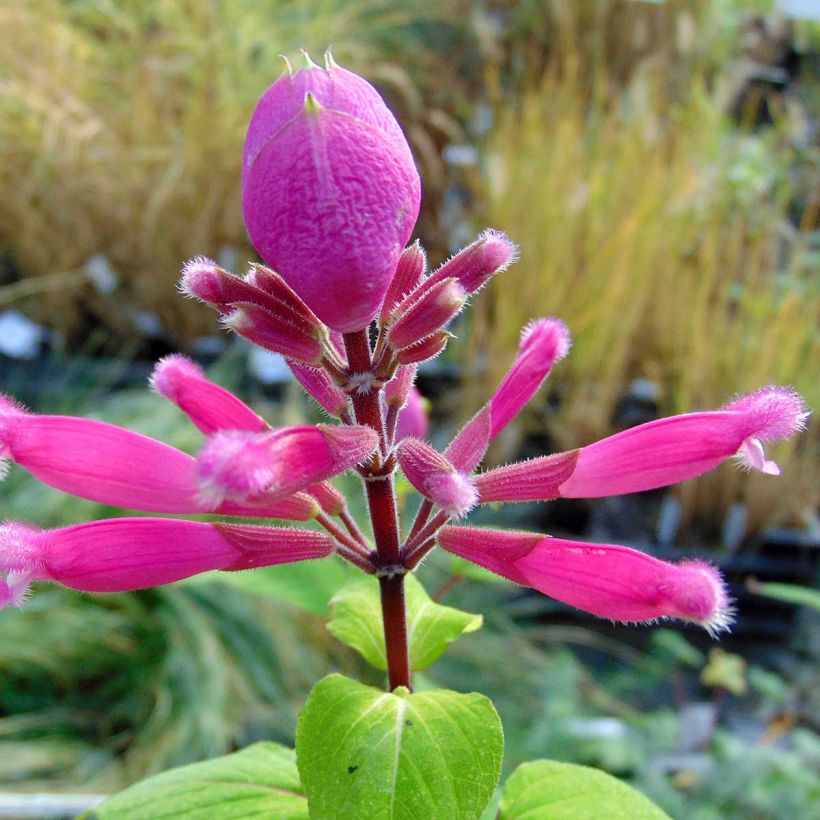

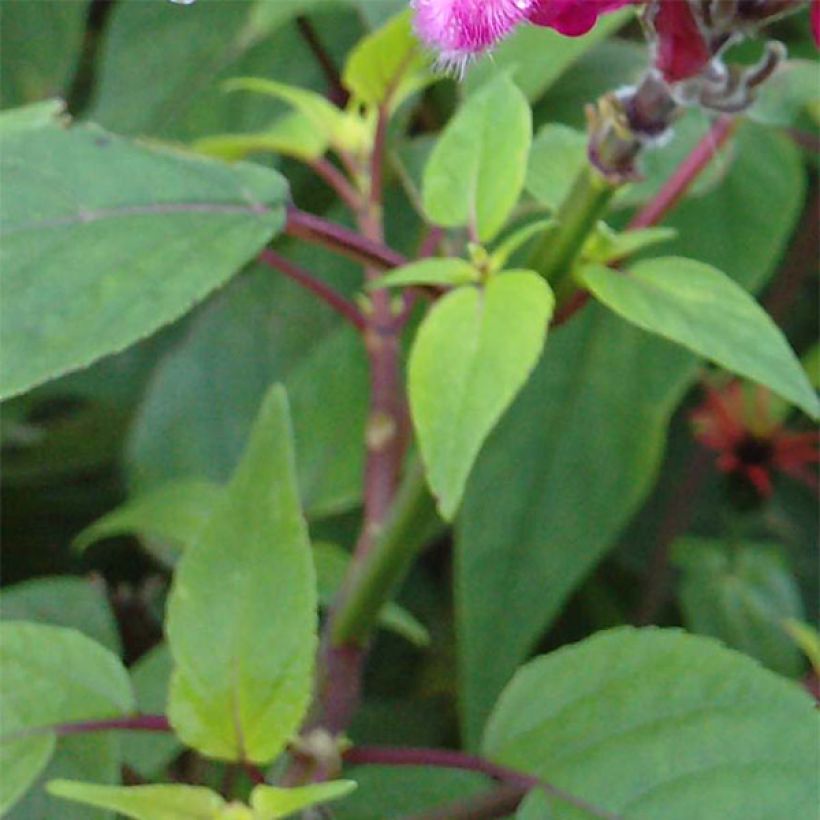

Flowering
Foliage
Plant habit
Botanical data
Salvia
involucrata
Bethelii
Lamiaceae
Rosy-leaf Sage
Central America
Other Salvia - Sage
View all →Planting and care
Plant Salvia involucrata 'Bethelii' after the spring frosts in a cold climate, in September-October in a warm climate. It should be planted it in ordinary but fertile, humus-rich or even clayey soil, as long as it is very well-drained. This plant is sensitive to waterlogged soils in winter, which can cause root rot. However, it tolerates heat and short periods of drought quite well. It requires regular watering during prolonged droughts to flower abundantly. In poor soil, incorporate some well-decomposed compost or leaf mould. Mulch it in winter, in colder regions, and protect it from cold and rain as much as possible. Plant it in the most sheltered corner of the garden, on a sandy slope, or any soil that does not retain moisture, which would be fatal to it in winter. It is excellent for container gardening, allowing gardeners in colder climates to keep it under cover in the winter.
Container gardening:
Salvia involucrata Bethelii should be placed in full sun from May onwards and stored in a cool, frost-free location in autumn. Good air circulation is important for the plant's health. It can be prone to scale insect attacks indoors or in a greenhouse. Watering should be greatly reduced during the winter period. Prune severely in spring.
In milder regions, such as oceanic or Mediterranean climates, outdoor cultivation is perfectly feasible, allowing this extensive perennial to form huge flowering bushes. The soil should be kept slightly moist in summer, and the plant watered frequently during the growing season. Cut it back in autumn and cover the base with straw and a waterproof tarpaulin weighted down to protect the plant from cold and damp.
Planting period
Intended location
Care
-
, onOrder confirmed
Reply from on Promesse de fleurs
Similar products
Haven't found what you were looking for?
Hardiness is the lowest winter temperature a plant can endure without suffering serious damage or even dying. However, hardiness is affected by location (a sheltered area, such as a patio), protection (winter cover) and soil type (hardiness is improved by well-drained soil).

Photo Sharing Terms & Conditions
In order to encourage gardeners to interact and share their experiences, Promesse de fleurs offers various media enabling content to be uploaded onto its Site - in particular via the ‘Photo sharing’ module.
The User agrees to refrain from:
- Posting any content that is illegal, prejudicial, insulting, racist, inciteful to hatred, revisionist, contrary to public decency, that infringes on privacy or on the privacy rights of third parties, in particular the publicity rights of persons and goods, intellectual property rights, or the right to privacy.
- Submitting content on behalf of a third party;
- Impersonate the identity of a third party and/or publish any personal information about a third party;
In general, the User undertakes to refrain from any unethical behaviour.
All Content (in particular text, comments, files, images, photos, videos, creative works, etc.), which may be subject to property or intellectual property rights, image or other private rights, shall remain the property of the User, subject to the limited rights granted by the terms of the licence granted by Promesse de fleurs as stated below. Users are at liberty to publish or not to publish such Content on the Site, notably via the ‘Photo Sharing’ facility, and accept that this Content shall be made public and freely accessible, notably on the Internet.
Users further acknowledge, undertake to have ,and guarantee that they hold all necessary rights and permissions to publish such material on the Site, in particular with regard to the legislation in force pertaining to any privacy, property, intellectual property, image, or contractual rights, or rights of any other nature. By publishing such Content on the Site, Users acknowledge accepting full liability as publishers of the Content within the meaning of the law, and grant Promesse de fleurs, free of charge, an inclusive, worldwide licence for the said Content for the entire duration of its publication, including all reproduction, representation, up/downloading, displaying, performing, transmission, and storage rights.
Users also grant permission for their name to be linked to the Content and accept that this link may not always be made available.
By engaging in posting material, Users consent to their Content becoming automatically accessible on the Internet, in particular on other sites and/or blogs and/or web pages of the Promesse de fleurs site, including in particular social pages and the Promesse de fleurs catalogue.
Users may secure the removal of entrusted content free of charge by issuing a simple request via our contact form.
The flowering period indicated on our website applies to countries and regions located in USDA zone 8 (France, the United Kingdom, Ireland, the Netherlands, etc.)
It will vary according to where you live:
- In zones 9 to 10 (Italy, Spain, Greece, etc.), flowering will occur about 2 to 4 weeks earlier.
- In zones 6 to 7 (Germany, Poland, Slovenia, and lower mountainous regions), flowering will be delayed by 2 to 3 weeks.
- In zone 5 (Central Europe, Scandinavia), blooming will be delayed by 3 to 5 weeks.
In temperate climates, pruning of spring-flowering shrubs (forsythia, spireas, etc.) should be done just after flowering.
Pruning of summer-flowering shrubs (Indian Lilac, Perovskia, etc.) can be done in winter or spring.
In cold regions as well as with frost-sensitive plants, avoid pruning too early when severe frosts may still occur.
The planting period indicated on our website applies to countries and regions located in USDA zone 8 (France, United Kingdom, Ireland, Netherlands).
It will vary according to where you live:
- In Mediterranean zones (Marseille, Madrid, Milan, etc.), autumn and winter are the best planting periods.
- In continental zones (Strasbourg, Munich, Vienna, etc.), delay planting by 2 to 3 weeks in spring and bring it forward by 2 to 4 weeks in autumn.
- In mountainous regions (the Alps, Pyrenees, Carpathians, etc.), it is best to plant in late spring (May-June) or late summer (August-September).
The harvesting period indicated on our website applies to countries and regions in USDA zone 8 (France, England, Ireland, the Netherlands).
In colder areas (Scandinavia, Poland, Austria...) fruit and vegetable harvests are likely to be delayed by 3-4 weeks.
In warmer areas (Italy, Spain, Greece, etc.), harvesting will probably take place earlier, depending on weather conditions.
The sowing periods indicated on our website apply to countries and regions within USDA Zone 8 (France, UK, Ireland, Netherlands).
In colder areas (Scandinavia, Poland, Austria...), delay any outdoor sowing by 3-4 weeks, or sow under glass.
In warmer climes (Italy, Spain, Greece, etc.), bring outdoor sowing forward by a few weeks.






























